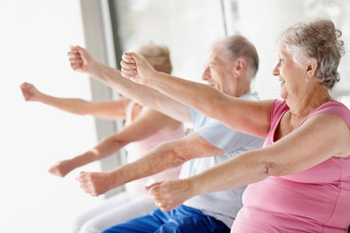Mar 27: Staying active can take you a long way to good health. It is not without reason that doctors tell us to engage in physical activities and lead an active lifestyle. It has various beneficial effects on our body, aiding day-to-day functions as well as keeping diseases at bay. Elders too should keep active to not fall prey to health problems. Even walking or carrying out household chores can work wonders. According to a recent study by University of Pittsburgh, engaging in daily activities like making bed, doing the laundry, climbing stairs, carrying groceries, dancing or walking can help immensely, even in their road to recovery from heart attack or other ailments.
 According to researchers, a daily walk is proven to be beneficial, and tai chi, yoga and balance training can also help, but encouraging patients to do more chores around the house is the simplest way to get people moving. The study published by the American Heart Association said patients should be encouraged to do everyday household chores instead of simply given medication.
According to researchers, a daily walk is proven to be beneficial, and tai chi, yoga and balance training can also help, but encouraging patients to do more chores around the house is the simplest way to get people moving. The study published by the American Heart Association said patients should be encouraged to do everyday household chores instead of simply given medication.
The document said simple household tasks can improve strength and balance and reduce frailty - particularly among elderly patients. The study, published in the Circulation medical journal, suggests exercise training is still a daunting challenge for the majority of older patients with cardiovascular disease, reports Mail Online.
"Encouragement to make a bed, carry laundry, climb stairs, dance, or walk as part of a daily routine may better achieve healthful physically active behaviour in many older adults," the researchers stated.
Dr. Daniel Forman, a geriatric cardiologist and chair of the American Heart Association, said doctors are too focused on using drugs and instead should prioritise exercise.
"Many healthcare providers are focussed only on the medical management of diseases, such as heart failure, heart attacks, valvular heart disease and strokes, without directly focusing on helping patients maximize their physical function," he said.
Dr Forman of the University of Pittsburgh added, "Emphasising physical function as a fundamental part of therapy can improve older patients' quality of life and their ability to carry out activities of daily living."
"By the time they're 75, about half of cardiac patients are taking more than 10 medications, and they can have cumulative effects that are uncertain and which can be debilitating," Forman concluded.





Comments
Add new comment